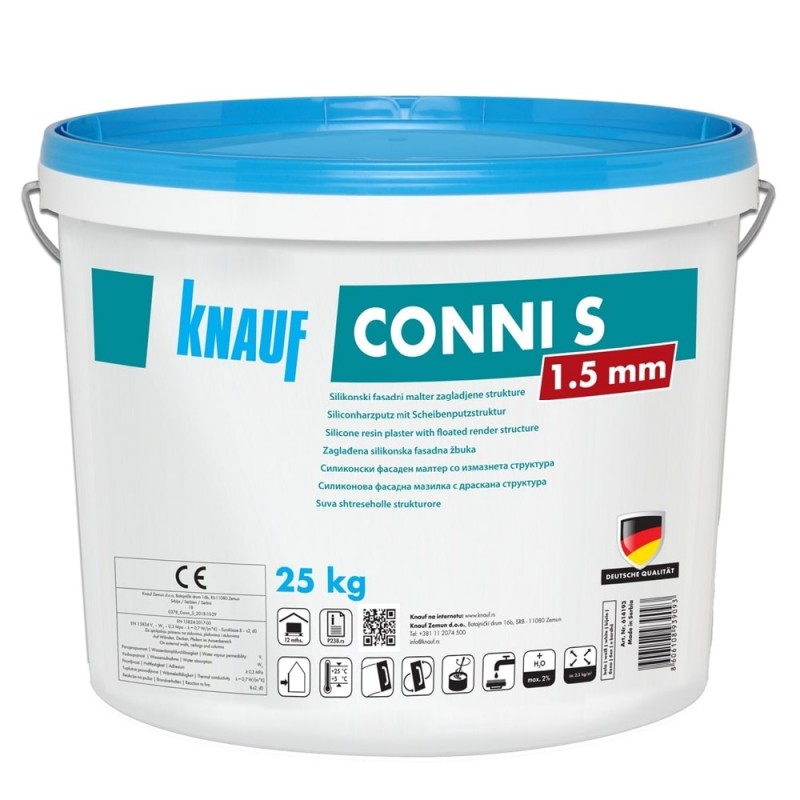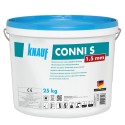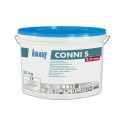Silicone facade plaster KNAUF CONNI S, textured and dragged, 25 kg.
- The price indicated is for a 25 kg bucket.
- Covers 9-10 m2
- Important: Free delivery for orders over 15 buckets;
Features:
- Paste-like finishing facade plaster according to BDS EN 15824
- Ready for direct use
- Excellent weather resistance
- High degree of water resistance
- Resistant to pollution
- Allows vapor permeability
- Intended for external use
- Available in white with the option for tinting
Conni is a ready-to-use, water-dilutable silicone finish facade plaster with high vapor permeability and water resistance. It is intended for external application and is highly effective for the protection and decoration of facades.
Composition:
- Silicone resin: Provides water resistance and durability.
- Dispersion resin: Contributes to excellent adhesion and plaster resistance.
- Special blend of fillers: Ensures uniform texture and coverage.
- Water: The main diluent that facilitates application.
- Additives: Improve various properties such as weather resistance.
- Preservatives: Protect the product from microorganism development.
- Pigments: Provide rich and long-lasting color.
Application area:
- System-tested finishing plaster for facade systems: Suitable for contact facades with thermal insulation boards made of EPS (expanded polystyrene) and stone mineral wool.
- Finishing facade plaster for external use: Ideal for providing an aesthetic finish and long-lasting protection for building exteriors.
Technical Data:
- Reaction to fire: B-s2, d0
- Material density: approximately 1800 kg/m³
- Water vapor permeability: V1 (high)
- Water absorption: W3 (low)
- Adhesion: ≥ 0.3 MPa
- Durability (frost resistance): w ≤ 0.5 kg/(m²∙h0.5)
- Thermal conductivity: λ = 0.7 W/(m∙K)
Storage and Transportation:
The product must be protected from freezing, high temperatures, and direct sunlight. When stored in its original packaging in a cool, frost-free place (at temperatures between +5°C and +25°C), the shelf life is 12 months.
Quality:
The product undergoes continuous quality control and is CE marked.
Preparatory Activities:
Before starting work, surfaces that may become contaminated must be protected. Freshly applied material must be protected from moisture, rain, rapid drying, direct sunlight, and strong winds with appropriate protective measures such as scaffold nets. The substrate must be solid, dry, level, and free of dust, grease, and oils.
Existing layers such as paints or old plasters must be checked for load-bearing capacity and compatibility with the Conni product, and if necessary, removed. The base plaster and/or reinforced putty must be completely dry before application.
Moist materials or layers can damage newly applied materials. The substrate must be primed with Knauf Quarzgrund, which should dry for at least 12 hours before applying the facade plaster. The primer should be tinted in a shade close to that of the finishing facade plaster.
Application:
Before starting the application, the correctness of the shade must be checked. For tinted facade plasters, use material from the same production batch. If the material is from different batches, it should be mixed and stirred well. The material should be stirred well with a mixer before use. If necessary, the consistency can be adjusted by adding a small amount of water. The material is applied with a stainless steel trowel and structured evenly and without interruption with a plastic trowel.
If necessary, the finishing facade plaster Conni can be painted with a suitable facade paint from Knauf. To avoid interruptions, enough workers should be hired for all levels of the scaffold, and the plaster should be applied "wet on wet". Tools should be cleaned thoroughly with water immediately after use.
Drying Time:
Under ideal conditions, the material dries in 1 day per 1 mm layer thickness. Under unfavorable external conditions, the drying time is extended. Under favorable weather conditions, the material will be completely dry after 14 days.
Application Temperature:
The material should not be applied at air and substrate temperatures below +5°C and above +25°C. The material should not be applied to heated surfaces.
Special Notes:
Due to the use of natural aggregates and the physical drying process, slight variations in shades may occur under different atmospheric and external conditions. When selecting a shade, a real, dried sample of the material should be used. Permanent resistance to algae and mold cannot be guaranteed.





